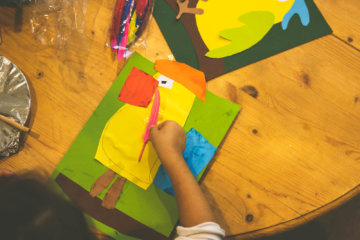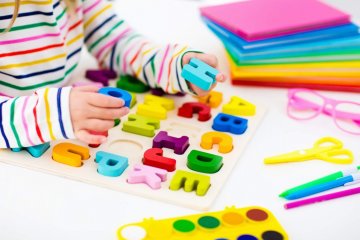Early childhood / pre-school education
In the Netherlands, children can start pre-school (peuterspeelschool) from the age of 2. This early childhood education is not mandatory but provides a great foundation for young learners. The focus is very much on learning through playing and on acquiring valuable social skills by interacting with other children. Some parents might be surprised by the fact that children are not yet specifically taught to read or write. But don’t worry, your child will learn these skills soon enough.
Tip: Register your child for childcare and primary school in plenty of time.
Transitioning to primary school
Free of charge
There are no school fees for state schools, making education accessible to all. However, you may be asked to contribute a small amount towards additional activities such as trips out.
Mandatory
In the Netherlands, there is a leerplicht. This means education is mandatory for all children from
5 years of age. However, most primary schools take children from the age of 4. You can enrol you child in primary school (basisschool) from the age of 3.
Mandatory education also means that you cannot take your child out of school for additional holidays without specific permission.
For details, click here!
A ‘warm handover’ (warme overdracht) from pre-school to primary school helps ensure a smooth transition. This is why children are typically invited for taster days in the month before their 4th birthday, which is when they can officially start primary school.
Tip: Taster days are sometimes referred to as stoeltjespassen, which literally mean ‘trying your chair for size’. So, be sure to ask your child if their chair was a good fit.

Primary education
Primary education (basisonderwijs) in the Netherlands is generally divided into three stages, although different types of school may offer an alternative approach.
Lower school (onderbouw)
Groups 1-2: Ages 4-6 years
Children are often taught in combination classes, so that they can acquire new skills at their own pace. Like pre-school, here too the focus is on learning through playing.
In fact, some schools actively discourage parents who want to teach their children to read and write before group 3. It’s worth checking this with your child’s teacher.
Groups 3-5: Ages 6-9 years
It’s generally not until group 3 that children begin formal reading and writing lessons. You’ll be amazed at how quickly your child absorbs this new information and loves applying their new skills.
In group 5 or 6, children will probably be asked to prepare a short presentation for their class on a hobby or topic that interests them. Topics range from dinosaurs to a pet cat, but also include socially oriented subjects such as an illness in the family.
Tip: Join your local library. Membership is free up to 18 years of age and they have a wonderful selection of books and educational games for all ages.
Upper school (bovenbouw)
Groups 6-8: Ages 9-12 years
Group 8 is often a repeat of group 7 as children prepare for their Cito test in February of their final year. After their test, the focus is on the final leaving show, performed for fellow pupils and staff and then for parents at the end of their last term. Some schools also take the children away on a school camp.
Note: The ages given for the different groups may vary. In the Netherlands it’s possible for children to skip a class or to do a year twice. If this happens, don’t worry – it’s quite normal and it’s far more important that your child is able to learn at their own pace.
Transitioning to secondary school
School advice (schooladvies)
In group 7 of primary school, parents are given preliminary advice on the most suitable type of secondary school for their child. This advice is based on the child’s test results and the teacher’s own observations throughout the year.
The definite advice is issued by the primary school in group 8. However this may be adjusted once the end-of-primary test results are known (citotoets or doorstroomtoets). Parents are given a unique code with which they can enrol their child in a secondary school of their choice, in line with the definite school advice.
Tip: Ask around for information about different schools in your area. Where are your child’s friends going? Do local children cycle to the school together?
Types of secondary education
There are three types of secondary education:
Most schools offer a one or two-year introduction period, to ensure your child continues at the best level for them.
Parents sometimes put pressure on the school, to get their child placed in a higher level. But don’t worry, the system is geared to towards enabling children to progress through the system to reach their potential in either vocational or academic studies. For example, secondary vocational education (MBO) or to HAVO. Similarly, if your child is finding VWO too difficult, they can join the HAVO group.
Tip: It’s important that your child learns at a pace that suits them, and the Dutch system is geared up to facilitate this. In fact, many schools offer different streams, to make a move easier.
For more information, click here!

Special needs programmes
The Dutch education system offers additional support for children with developmental and learning needs. These can include:
There are also other levels of support for non-native Dutch-speaking children,. These range from in-class support to specialised education for learners with specific needs. Your child’s teacher will be able to advise you on what is available.
Finally: Reaching their potential
The Dutch education system is designed to be flexible and supportive, ensuring that every child has the opportunity to reach their potential. So, be sure to prepare for parent-teacher feedback evenings (ouderavond sometimes also referred to as 10-minutengesprek), and attend other school events and presentations. And don’t be afraid to ask for extra help or advice.